Darkest Days by Dates Down Under: Part 4
Kiwi Dollar Weaponized as Ransom Notes — 'Bastille Day' Currency Crisis, 1984
➳ This "Darkest Days by Dates Down Under" series explores how New Zealand’s crises are thematically encoded with historical riffs to signal authorship, cooperation, scapegoats and caution — while telegraphing hidden objectives.Introduction: A French Revolution Themed Election and Currency Crisis?
The snap election in mid-1984 is most remembered for the drama triggered by the incumbent cantankerous prime minister, who bristled at being forced to gain two votes from the opposition to stave off passage of legislation to rezone New Zealand as nuclear free. However, the decision attributed to N.Z. PM Robert Muldoon for calling an early election, that in turn triggered a currency crisis — is poorly understood.
Speculators exploited an opportunity to make fortunes by placing bets that the N.Z. dollar would be devalued. In effect, ‘the market’ voted for a downward currency revaluation. The ‘business community’ knew the mind of Roger Douglas, who would soon become Minister of Finance, in the Lange Labour Government. Douglas had let business interests know he would devalue the dollar if Labour were elected to power.
Thus, a siege of the New Zealand economy began in earnest with a speculative attack on the New Zealand dollar throughout the 1984 election campaign. An atmosphere of crisis was conjured in the immediate aftermath of the Lange-led Labour Party election victory of July 14 1984, to justify far-reaching economic ‘reforms’.
Big Business had also bankrolled most of the Labour Party’s election campaign, while Wellington property tycoon, Bob Jones, bankrolled a rival center-right party to draw votes away from National. Muldoon’s tight grip on the economy was in the firing line.
Yet, blaming Muldoon for being an obstacle to economic reforms was, in part, a matter of optics, and selling that cover-story would require a great deal of theatrics. Muldoon could lead his base support of provincial New Zealand, manufacturers and small and medium business owners, only as far they would follow. What the proponents of a ‘market economy’ proposed was full-blown economic warfare that would upend businesses, including farms, as well as uproot the state sector with mass layoffs, while public infrastrucutre, commercial trading entities, and services were corporatized; many of which were stealthily earmarked for ‘privatization’, or state asset sales.
In this dispatch, former Māori Television news and current affairs editor Steve Snoopman, reveals the uncanny coincidences of key dates associated with the ‘Bastille Day’ Election and the Currency Crisis of mid-1984. Some key events appear to have been timed to riff off historical events, to signal a staged currency crisis was set in motion. He makes the case that Muldoon was ensnared into calling the ‘Bastille Day’ Election, in order to trigger a run on the currency that would create the spectacle of crisis, so that a climate of emergency would jolt the political trajectory of N.Z.
As a modus operandi, such historical riffing signals authorship, cooperation, caution and to telegraph objectives. The signals indicate players are communicating their cooperation to take a plot ‘live’, convey hidden objectives, and to broadcast psychotic humour, thereby posting themselves like hostages — as applied game theory predicts.
In this “Darkest Days by Dates Down Under” series, Snoopman surveys the curious coincidences of calamities, catastrophes, or crises that jolted the nation while power, wealth and control were accumulated. In this disturbing multi-decade sketch, Snoopman traces the creepy trail of spooky minds, who he believes plot machinations with an eye on the past and a dark vision of the future. The circumstantial evidence reveals an awful picture of each new administration becoming embroiled in a cover-up of a staged event made to appear as an accident, a natural disaster, or a crisis caused by an unhinged man, or an ‘unsolved’ crime. The modus operandi of metaphor laden-historical riffing continues because most monkeys suffer from symbol illiteracy.
Snoopman finds that the Currency Crisis was thematically encoded with revolution, war, sovereignty and religious metaphors codified into the historical riffs to signal cooperation, caution and a crisis cover-up — while telegraphing a spooky objective.
It is clear the banking fraternity are a powerful faction serving both the domestic civil oligarchy, and their foreign counterparts, and who together dominated the state bureaucracy. This ‘confederacy of banksters’ had free rein to inflict a financial crisis, by weaponizing the currency and transmorphing the ‘Kiwi Dollar’ into ransom notes, while threatening to takedown the economy by draining the state Treasury.
The politically-captured Muldoon Government, which had already covered-up the culpability of Air New Zealand and the Civil Aviation Authority over the Erebus Crash— with the staged Springbok Tour civil unrest — was akin to a house mouse being battered by a bored AristoCat, who awaited the return of the ‘butler’ with more food.
➳ Key Finding: In this ‘Bastille Day’ Election Currency Crisis event, the meta-data of historical riffing is the tell-tale ‘DNA’ match of New Zealand’s deep state network ensnaring the cantankerous prime minister into a strategic wedge, where his room to manœuvre got thinner and thinner as more chess pieces made their moves. His key trait, a narcissistic lack of emotional regulation, could be easily triggered. The timing of a dinner hosted by the Governor-General, Sir David Beattie, between Lange and other Labour Party politicians and with the Parliamentary Press Corp, at Government House, on the night of June 14th, when matters came to a head over the narrow defeat of the Nuclear Free New Zealand Bill — was conveniently uncanny. Muldoon was made to wait, and while he was ‘put in his place’, he predictably got sloshed on gin. In a drunken state, he agreed to the July 14th date, and the ‘Bastille Election’ was on.
Currency Crisis, June 15 — July 17 1984 — Death Toll: 0
In June 1982, Muldoon had instituted a policy shock when he froze rents, interest and prices amid galloping inflation and an impassé with trade unions on wage bargaining.
This wage and price freeze would be Muldoon’s undoing, because the control of prices and wages across the whole country — while it had a fixed foreign exchange rate — would create a domestic and international backlash. A rebellion against Muldoon resulted, with a staged currency attack two years later that would drain the Treasury.
Conspicuously, everything was frozen, except the share-market — which boomed.
Muldoon was stuck between an oligarchic rock and a hard labour place. Proponents of a ‘market economy’,* claimed they tried to persuade Muldoon. But what they proposed was full-blown economic warfare that would cause hardship. And, the labour unions would not give any ground on demands for wage and salary increases to keep pace with high inflation — as a result of crises ultimately caused by the planet’s Overlords.
The timing of Muldoon’s wage and price freeze on 22 June 1982 was potent because on that date, 22 June in 1836, Edward Gibbon Wakefield, the co-founder of the Second New Zealand Company, presented his case for the colonization of the South Pacific archipelago to a committee in the House of Commons. After doing time in Newgate Prison for three years for abducting and marrying a 15-year-old girl called Ellen Turner, Wakefield advocated a “systematic” approach to colonization, including a policy of selling land at a “sufficient price” to fund the migration of laborers.
Ergo, the colonists were asking for too much pay at a time when there was a world debt crisis, following two Oil Price Shocks, which had curtailed tax revenues on imports because so many nations couldn’t afford to buy each others’ exports. Muldoon had the Wage Freeze Regulation and the Price Freeze Regulation approved by the Governor General at Government House via the mechanism of an Order in Council.
By this route, the Prime Minister circumvented Parliament. In this way, Muldoon’s authoritarian chess move riffed off the New Zealand Company’s move to the Tory with colonists, to New Zealand in May 1839, thereby attempting to beat the British Crown to control land sales and prices. Ergo, Muldoon’s play got the jump on the unions.
* The ‘market economy’ is a sanitized term to describe technocratic neo-feudalism (later dubbed neoliberalism), and was inflicted as a form of Shock Doctrine class warfare, as Naomi Klein recounted more generally in The Shock Doctrine. The gaming of N.Z. had advanced on Robert Muldoon’s watch as Prime Minister (1975-1984), when large industrial development ‘loans’, liberalizing regulatory controls over the share market, and legislating voluntary union membership happened. The economic woes handed to him in 1975, had resulted in part from the 1973-74 Oil Price Shocks, which had been engineered by a Kissinger-Rockefeller-Bilderberger Nexus to reinvigorate the US FED Dollar.A contrived theater ensued to cast blame on Muldoon as the obstruction.
After all, Muldoon could only lead as far as his voters would accept — absent a crisis.
Ironically, after a drunk Muldoon called for a snap election in mid-June 1984 amid the theatrics, his political rival David Lange, offered his shadow cabinet to be a caretaker government during the campaign, just three months after the caretaker of the Trades Hall, Ernie Abbott, was blown apart by a suitcase bomb at 5:19pm on 27 March 1984.
A reset of New Zealand was orchestrated with a ‘silent revolution’ of the incoming government on Bastille Day in 1984, to implement the blitzkrieg corporate heist of the economy — amid a staged currency crisis. Four days out, on 10 July, the ‘captains of industry’ signalled a ‘sea-change’ by hosting a lunch for Labour Party leader, David Lange, whose party had no electoral mandate to implement a planned economic warfare programme designed to create a crisis-ridden society. The timing was potent.
The night of June 14th, Lange and other Labour Party politicians just happened to be at dinner with the Governor-General, Sir David Beattie, and the Parliamentary Press Corp, at Government House, when competing matters came to a gin-fuelled head.
In light of the broader state-craft underway, this dinner’s timing is intriguing. Earlier, in May 1984, the Labour Party Executive has released its international affairs policy platform stating its intention to legislate to make N.Z. nuclear-free and ban visits by nuclear-armed or powered vessels. Meanwhile, the Labour Party had suppressed its economic policy proposals to transform the nation into a ‘market economy’.
Thus, in June 1984, when the National Government narrowly defeated a Nuclear Free New Zealand Bill that had been sponsored by a right-winged Labour Party MP, Richard Prebble, most New Zealanders did not realize that a political-financial coup was underway. This politically shrewd introduction of the Nuclear Free NZ Bill had caused Muldoon to gain votes from two renegade Labour MPs, because two National MPs, Marilyn Waring and Mike Minogue, voted with the Opposition. On the night of June 14th 1984, an embattled, embittered and spirits-fuelled Muldoon called a snap election; in spite of warnings that such an event amid an imposed freeze on prices, wages, interest rates, dividends and the exchange rate — would likely trigger a currency attack. It did, immediately. The spectacle of crisis was manufactured.
The evening that Muldoon stated July 14th was “the appropriate date” for the election, he added “we’ve worked it out at Government House.” When the embattled Muldoon visited Government House to confer with the Governor General, Sir David Beattie, about an election date, he was keep waiting and became sloshed on gin.
Evidently, we are too believe it was ‘decided’ at Government House that the election would occur on Bastille Day, of French Revolution fame. Just a coincidence, mind you.
The date 14 July was also packed with historic potency since it was on 14 July 1853 that the first general election in New Zealand commenced, with polling staggered around the colony due to the limitations of travel in a land that would remain largely undeveloped until after the consolidation stage of the N.Z. Masonic Revolution. With this election, a system of ‘responsible government’ was established, meaning the government can only be made up of Ministers who are first elected members as the House of Representatives. The government only stays in power while it has a majority of members in the House of Representatives, a West Minister-style Parliament.
Particularly, potent since the French missed out claiming the South Island. Especially, since four days out from the election, on 10 July 1984, Lange had lunched with 70 captains of industry, who had moved their money to back the Labour Party. The date 10 July carried historic potency because on the night of 10 July 1840, a French naval captain, Lavaud, arrived in the Bay of Islands on the French corvette, L’Aube. Lavaud was beaten in his mission to claim the South Island as a colony of France by the Royal Navy warship, HMS Britomart. Captain Hobson sent a ship at haste to beat the French.
Given Muldoon’s justification for calling a snap election was about having to secure two votes from the main party rival, Labour, to oppose the Nuclear Free New Zealand Bill, the date of June 14 1984 was also politically provocative. On June 14 1942, the U.S. 1st Marine Division arrived in Wellington. Numerous U.S. ships arrived in 1942 and 1943, to build camps, roads, airfields, tunnels, bunkers and gun emplacements.
Particularly, since the Nuclear Free NZ Bill would be seen by the French as evidence that the major opposition party had been swayed by the anti-nuclear movement. And that such a move was a threat to the ANZUS military alliance between Australia, New Zealand and the United States, because the issue of U.S. nuclear-powered and armed vessels visiting New Zealand had become a hot political issue, since the French began nuclear testing in the Pacific on July 2 1966, because President de Gaulle wanted France to be a nuclear power capable of being independent of the NATO Alliance.
The potency of the July 14 ‘Bastille Election’ telegraphed the ‘Silent Revolution’ in the works, which was a planned corporate heist of the New Zealand economy. It would be an ‘experiment’ in railroading structural ‘reforms’ to all sectors of society, to favor an over-entitled minority segment (and their foreign counterparts): the civil oligarchy.
This ‘Silent Revolution’ imposed a blitzkreig of policy shocks such as lifting restrictions on interest rates, rents, and product prices, slashing subsidies to farming and manfacturing, corporatizing state-owned commercial trading entities, infrastructure and services in preparation for their sell-off, slashing welfare payments, introducing individualized employment contracts to break union power, and ramping up taxes, tolls and tickets to construct a plantation economy of neo-feudal peasants.
The July 14 date, therefore, referenced the French Revolution, since July 14, Bastille Day commemorates the Storming of the Bastille in Paris in 1789, which is an important date in the French Revolution. On July 14, 1789, a violent uprising that helped usher in the French Revolution occurred at Bastille, which was a military fortress and prison.
Besides holding gunpowder and other supplies valuable to revolutionaries, the Bastille also supposedly symbolized the callous tyranny of the French monarchy, especially King Louis XVI and his queen, Marie Antoinette. By 1789, however, it was scheduled for demolition, to be replaced by a public square. Moreover, it was down to just seven prisoners: four accused of forgery, two considered “lunatics” and one kept in custody at the request of his own family. The French Revolution had Masonic roots.
Muldoon refused to authorize a currency devaluation that incoming Finance Minister, Roger Douglas, had quietly promised to the ‘business community’.
Currency speculators, who included the state-owned Bank of New Zealand, had bet on a currency devaluation. The day that the Reserve Bank closed the foreign exchange floor, Monday 16 July, was precisely 888 weeks since Muldoon had overseen NZ’s currency change-over from the imperial pound to the decimal dollar, on 10 July 1967, on his first watch as Under-Secretary of Finance. The bankers dined at Le Normandie Restaurant. They had successfully pulled off a financial coup d’état to commence their ‘silent revolution’. The corporate heist of the economy commenced with a pre-planned blitzkrieg of ‘reforms’. Bureaucratic mountains were moved by inflicting ‘shock therapies’ of the kind prescribed by Milton Friedman, who was invited to New Zealand in 1981 by Don Brash, the future governor of the N.Z. Reserve Bank.
While Governor of the New Zealand Reserve Bank, Spencer Russell, and Secretary of Treasury, Bernie Galvin, dined with bankers from the Bankers’ Association at the Le Normandie Restaurant on the evening of July 16, Reserve Bank official Dr. Roderick Deane called his bosses to put them in touch with “certain Ministers” of Muldoon’s cabinet. Normandie, or Normandy, to New Zealanders is most famous for the Allied Forces’ Invasion of Normandy in Northern France in June and July 1944. The codename for the decisive Battle of Normandy was Operation Overlord.
Back in 1975, when Muldoon became prime minister, he appointed Bernie Galvin as Permanent Head of the Prime Minister’s Department, on secondment from Treasury, to lead a liaison group that would glean economic intelligence from around N.Z. It seems that in the figure of Mr Galvin, was a rook whose versality as a chess piece would yield data to assist with the consolidation stage of the ‘Silent Revolution’.
Therefore, Lange’s luncheon keynote speech in front of 70 “chief capitalists” on 10 July 1984 — as Stevan Eldred-Grigg recounted in his book The Rich: A New Zealand History — was a provocative, potent, and politically poingnant signal of a ‘sea change’.
The date, July 10, was potent, because it was the 17th anniversary since New Zealand’s currency became fully and easily convertible with the US FED dollar when it switched from the imperial pound to the decimal dollar, since this changeover was overseen by Robert Muldoon, as Under-Secretary of Finance (4 March 1967 — 8 December 1972).
That currency changeover in itself was significant, since the privately-owned U.S. central bank, the Federal Reserve, maintains a monopoly over the currency and provides a lucrative mechanism for the stockholding banks to manufacture credit, and make windfall profits on the extortionist racketeering fees, slyly called ‘interest’. In other words, New Zealand’s banking fraternity has shifted away from the Bank of England and easy convertibly with the British Pound currency, and to the Fed.
In 1688, when the ‘Glorious Revolution’ deposed the Catholic King, James II, a protestant monarch was propelled to occupy the throne at Christmas, 888 years after Charlemagne was crowned Holy Roman Emperor on 25 December 800 AD. The installment of Prince William of Orange and his consort, Mary, to the English throne paved the way for the establishment of the Bank of England. The ‘Glorious Revolution of 1688’ — which resulted in Prince William of Orange becoming King William III on the British throne after they landed at Torbay, near Brixham, Devon, on November 5 with 250 ships — was secretly bankrolled by English Rosicrucian Freemasons, the Bank of Amsterdam, and Amsterdam Jews, and was part of a two-hundred year Venetian project to takeover Britain. James II was exiled from ‘Protestant England’.
Crucially, Sionist Rosicrucian Freemasonry came to rule over the British Monarchy and the Church of England, after having successfully achieved a political and business merger with the Dutch in 1688, as Nicholas Hagger found in his epic study, The Secret History of the West, that modelled for the patterns of revolutions, how secret societies plotted them and reasons for the subterfuge. Sionist Freemasonry is a revolutionary force committed to forging a universal empire under the rule of one monarch. French Templar Freemasonry developed into a revolutionary force committed to forge a universal empire under the rule of one federal republic. Thus, a hidden ‘Masonic Schism’ underpinned eight millenia of revolutions, wars, and coups d’état.
Drawing upon 550 years of revolutions, Hagger showed that all revolutions have four distinct stages with four archetypal characters. An Occult Idealist expresses a heretical vision, which is given an intellectual expression by an Intellectual Interpreter. A Political Actor takes this blueprint into the political realm, where it is corrupted by the ruling regime, and led by a Consolidator, those secret groups most invested in the occult vision plot physical repression to realize their utopia.
The Bank of England — which was royally chartered in 1694 with 1300 owners — as the first national central bank, worked as a means to fund domestic development, imperial colonies, and finance wars, while enslaving the population with debt and taxes. Ergo, in 1984, the bankers behind the staged currency crisis were telegraphing that they were the real power behind ‘the throne’, and showing they’d easily dethroned a low-born monarchical prime minister who liked to brag he knew the economy best.
Since the Reserve Bank’s currency exchange floor was closed 888 weeks after NZ’s currency changeover, it appears the fraternity who installed monarchs to thrones had encoded the event to communicate that there was a political puppet changeover underway — with red and white balloons. And Muldoon was now ancient history.
By early 1984, the business community knew Roger Douglas’s position, particularly as he was friends with Treasury Official and future president of the Business Round-Table, Roger Kerr, and also with Alan Gibbs, who set-up Chase-NBA’s N.Z. foreign exchange trading unit in the early 1970’s. Crucially, a February 1982 Labour Party Economic Policy document was kept secret because it prescribed radical economic policies in the detail such as slashing taxes on the rich, indirect taxes, public sector spending reforms and devaluing the currency. Kiwis were ensnared for vote harvesting.
Historical Riffs as Hostage Exchanges in a Manuactured Currency Crisis
The theater of the changeover of political power in the 1984 election, and it’s entanglement with a currency crisis reveals, in my opinion, a detectable subtext. The themes appear to demonstrate the enduring power of a transmarine banker fraternity planning their chess moves with occult, or hidden, knowledge. And with both, a long range strategy to influence an environment to achieve desired objectives, as well as fleet-of-foot tactics to target opponents, capture allies and bewilder the masses.
Muldoon’s humiliating capitulation 888 weeks after he led the switch of NZ’s currency from easy convertibility with the imperial U.K. pound to the metric U.S. dollar, was packed with symbol sorcery, and readily decipherable to the metaphor-attuned.
As John Campbell might have said, ‘did we fail to read the tea-leaves, I wonder?’
In the Sumerian cipher of numerological tables, 888 corresponds to ‘alphanumeric code’. Sumeria was the first civilization that invented a market credit system with which to settle transactions. The Sumerians learned from a prior culture.
The number 888 is symbolic in various ‘mystical traditions’. In the heretical Christian Gnostic tradition, the application of numerology (or gematria) to the Greek alphabet (which has eight units, eight decades and eight hundreds), the name ‘Jesus’ corresponds to eight hundred and eighty eight — as Saint Irenaeus of Lyons (130 AD-202AD) recounted in volume I, Against the Heresies; an attack on Gnostics.
In his scholarly book, Alphanumeric Cosmology from Greek into Arabic, Juan Acevedo traces what he terms an ‘alphanumeric scission’ to describe a separation between letters and numbers with the adoption of Indian numerals across the Medieval Mediterranean from the East, at around the eighth century onward. Although there were obvious benefits for computation in adopting decimal systems, the cosmological comprehensions of the universe that had been expressed in languages with unified letters and numbers, left a cascading effect on diverse fields of human endeavour.
According to Joseph Farrell in Babylon’s Banksters, it took the Latin Crusaders occupying Constantinople in 1204 for Christian monarchs to win the sovereign power in Europe to mint their own gold coins. The Byzantine Empire shrunk and the Latin Empire, or Christian West, expanded. The franchise over mining and minting of gold — which had been the office of the sovereign pontiff — was over.
Thus, it would appear that this esoteric knowledge carried down through the ages in the brotherhoods, orders and masters of Islam, Christianity, and Hebrew traditions, had been weaponized into symbol sorcery for horrendous geo-political purposes.
Adding to the symbolism, Muldoon was known as one of the ‘Young Turks’, a nickname for a group of young rebels, because he had been one of a new batch MPs in 1960, who criticized the party’s senior leadership. The nickname derived from a political reform movement, called the Young Turks, in the early 20th century that favored the replacement of the Ottoman Empire’s absolute monarchy with a constitutional government. The Ottoman Empire collapsed at the end of World War I.
Britain plotted to collapse the Ottoman Empire in World War I, because Germany was building the ‘Berlin to Bagdhad Railway’ to transport oil and rival the Suez Canal.
Conspicuously, in 1915, amid flak copped by Winston Churchill, as First Lord Admiral of the Royal Navy, for overseeing the military ‘disaster’ at Gallipoli, the 33°Freemason bragged that “Australia and New Zealand [were] smiting down in the last and finest crusade the combined barbarism of Prussia and of Turkey.” The brutal truth is the British Secret Élite devised the Gallipoli Campaign in the Dardanelles to sacrifice Australian and New Zealand men. Tsar Nicholas II was promised the port city of Constantinople as a ruse to keep the Russians in the war on the Eastern Front.
Ergo, there was a subtext of war, revolutions and betrayals underpinning the Bastille Day Election of 1984, that came bundled with the N.Z. Dollar weaponized as ransom notes in a hostile raid on the state Treasury to construct a spectacle of crisis.
A ‘silent revolution’ — riffing off the English and French Revolutions, and the Allies’ Operation Overlord to rescue Nazi-occupied France in WWII — had begun in 1984.
Audaciously, the then-state-owned Bank of New Zealand was among the institutions that had bet against the dollar, as Marcia Russell found while producing a documentary series, Revolution, that she turned into a book, Revolution: New Zealand from Fortress to Free Market. N.Z.’s financial authorities could have revealed data from the Nostro accounts; a Wellington-based cheque clearing-house for currency trades.
Rod Deane — the Reserve Bank Deputy Governor — claimed the month-long speculative currency attack ‘forced’ the Reserve Bank and Treasury to borrow $1.7 billion to prop up the NZ dollar’s value. In essence, the currency crisis was engineered by the Neo-Feudalist Sect as a coercive mechanism to post ransom notes. The ‘currency speculators’ remained ‘anonymous’, with the complicity of the financial authorities, so that they could get away with demanding tax-payer funded payments on their bets.
Therefore, it is ironic that Muldoon’s short-lived refusal to allow the Prime Minister-elect, David Lange to act on advice from Treasury and Reserve Bank officials triggered a ‘constitutional crisis’. After all, the former Young Turk’s theatrics led to the Constitution Act 1986, which ‘clarified’ the power of the Governor-General to act on behalf of the ‘Sovereign’. Thus, Muldoon’s part in the staged theatrics assisted a trans- corporate political movement, fusing the British Monarchy to Neo-Feudalism.
With oligarchic callousness, the N.Z. economy was also bound to Australia’s, and it was those trans-Tasman corporate ownership, directorship and trade ties that bound Australasia to the ‘Trilateral Economy’ of North America, Western Europe and Japan.
Key insiders of New Zealand’s Establishment telegraphed their moves in plain sight, using ‘the news’ as a daily show of ritualized power, while posting themselves as hostages as they telegraphed their cooperation, and as they manufactured consent of the governed by exploiting newsrooms as vectors to spread fear-fuelled crisis stories.
When the bankers signalled their check-mate move by closing the Foreign Exchange Trading Room at the Reserve Bank of New Zealand on Monday 16 July 1984, it was precisely 19 years after the gunners of the 161 Field Battery fired New Zealand’s first shots of the Vietnam War from their base at Bien Hoa, near Saigon, on 16 July 1965.
French colonial rule in Vietnam officially began in the mid-19th century, following the Treaty of Saigon in 1862 and the subsequent establishment of the colony of Cochinchina. By 1887, the French Empire had consolidated their power, forming French Indochina, and held control over Vietnam, Laos, and Cambodia until 1954.
This manufactured Bastille Day Election and Currency Crisis episode contained metaphors of the Masonic Schism that played out on the surface as a religious rivalry during the Crusades, the first and second Hundred Years’ Wars, as well as the revolutionary themes of the English, American, French and Russian Revolutions, as well as the wars of the 20th Century playing out as the Third Hundred Years’ War.
Although historian Gavin McLean wrote on the government’s NZ History website, that Muldoon was defeated in the “Bastille Day snap election”, he may not have noticed the symbolism of the Reserve Bank officials, the Treasury Secretary and elites from the Bankers Association dining at Le Normandie Restaurant on the Monday following the election. The closure of the currency trading room at the Reserve Bank the same day, telegraphed the check-mating of the monarchical prime minister, Rob Muldoon.
Muldoon’s chess move on June 22 1982 to freeze all wages and freeze all prices, except stock values, was pivotal in his undoing. The chief capitalists moved their money to bankroll the opposition Labour Party and while the founder of the Wellington Capital Club, Bob Jones, bankrolled the New Zealand Party to draw votes away from National.
Brazenly, Roger Douglas, the Lange Labour Government Finance Minister — who was widely credited with being the ‘architect’ of the economic shock therapies, dubbed ‘Rogernomics’ — bragged in a private dinner conversation in December 1986 that the idea behind the ‘free market’ reforms was to transform New Zealand into a Switzerland of the South Pacific. Douglas said a top strata of wealthy would rule and in 25 years time, most New Zealanders would not be able to afford to live in N.Z.* He envisaged Labour would be in power for 10 or 15 years or more to railroad the reforms.
Ergo, ‘the colonists and the natives’ would emigrate and be replaced with new batches of immgrants. As such, Muldoon’s State of the Nation address on June 22 1982 riffed off Edward Gibbon Wakefield’s British Colonization of New Zealand petition on June 22 1836, to a House of Commons committee. Wakefield had argued the capitalists in the colonies placed little value on the fruits of their endeavours, since they were forced to be their own workers, because immigrant workers were able to beocme instant landowners in colonies where land prices were dirt cheap. Wakefield envisaged the solution of controlling the supply of land available for migrants to create a “sufficient price” for land, that in turn would regulate the supply of labour.
Muldoon’s ‘State of the Nation’ address was a shot across the bow to the unions, while it also sought to lay out a ‘manifesto’ for ‘responsible government’. It also telegraphed the opportunity for the capitalist class to make fortunes in the stock market.
The New Zealand dollar was weaponized as ransom notes in a manufactured currency crisis, within the style of government by emergency established during the Muldoon Era. Key players performed hostage exchange rituals, as they advanced the chess game in play — in accordance with game theory, as Snoopman snoop-splained in the introduction to this series, “Darkest Days by Dates Down Under”. A failure to post oneself as a hostage to communicate cooperation of a player representing a key role, a critical institution, or an important vested interest when a plot is in play — can be taken as a defection, and can be be expected to be met with swift stiff punishments.
Thus, a reset of New Zealand was orchestrated with a political-financial coup of the incoming Lange Labour Government in July 1984, to implement the blitzkrieg corporate heist of the economy. A Neo-Feudal Cliqué comprising officials from the Reserve Bank, Treasury, and the NZ Business Roundtable conspired with an inner group of the Labour Party, to mete-out ‘free market reforms’ without an electoral mandate, across multiple sectors at speed to overwhelm opposition forces.
* Confidential source in private conversation with three witnesses.
SEE related: Darkest Days by Dates Down Under series introduction
Moving a Mountain — The Crash of Flight TE901: November 28 1979
Darkest Days by Dates Down Under: Part 1 [The Snoopman Files]
The Great Divide — 1981 Springbok Rugby Tour, New Zealand
Darkest Days by Dates Down Under: Part 2 [The Snoopman Files]
Transport Themed Terrorism — Wellington Trades Hall Bombing, March 27 1984
Darkest Days by Dates Down Under: Part 3 [The Snoopman Files]
See also: “Terror Archipelago Down Under? Pt 1 Industrial Sabotage, Ritual Terrorism, and Police State Formation in New Zealand” on Snoopman News
Back when Steve Snoopman was ‘Snoopboy’, he delivered the Auckland Star during the dark days of the Reagan White House. He forged his superpower to ‘Thunk Evil Without Being Evil’ while writing a thesis on the Global Financial Crisis. Upon quipping that Batman had failed to bust any Gotham banker balls — since his ass is owned by DC Comics — he consequently realised New Zealand needed a Snoopman.
Editor’s Note: If we have made any errors, please contact Steve ‘Snoopman’ Edwards with your counter-evidence. e: steveedwards108[at]protonmail.com
Steve Snoopman also posts on Snoopman News [at] https://snoopman.net.nz/


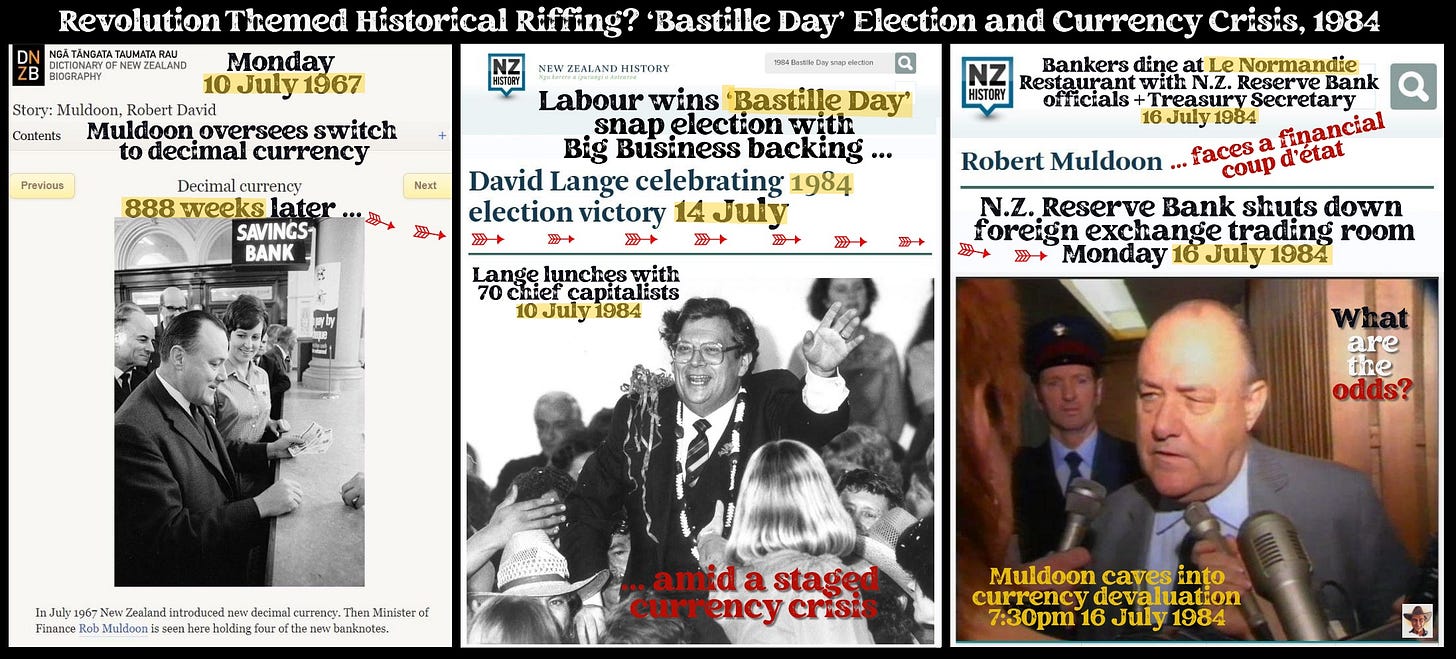
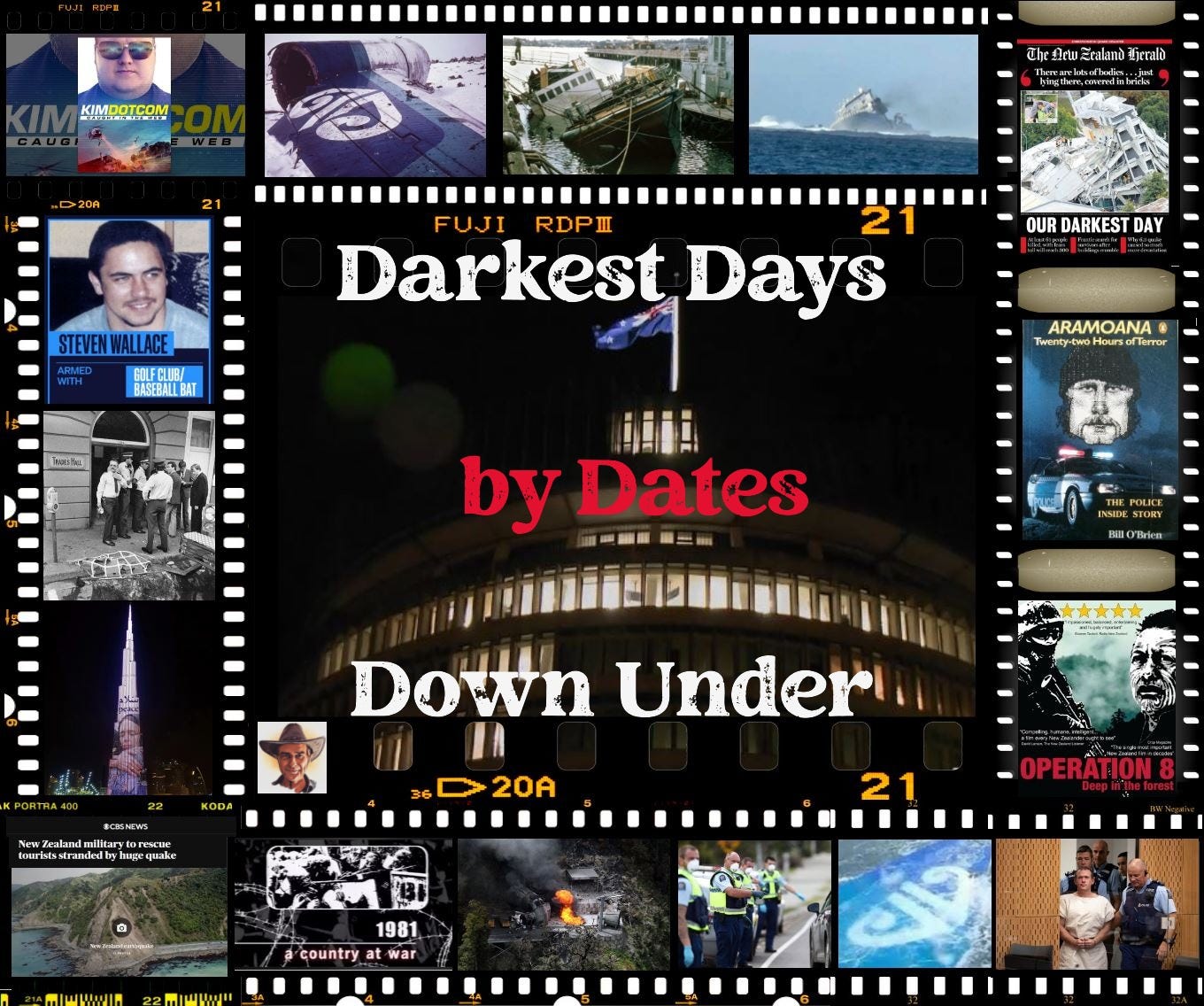



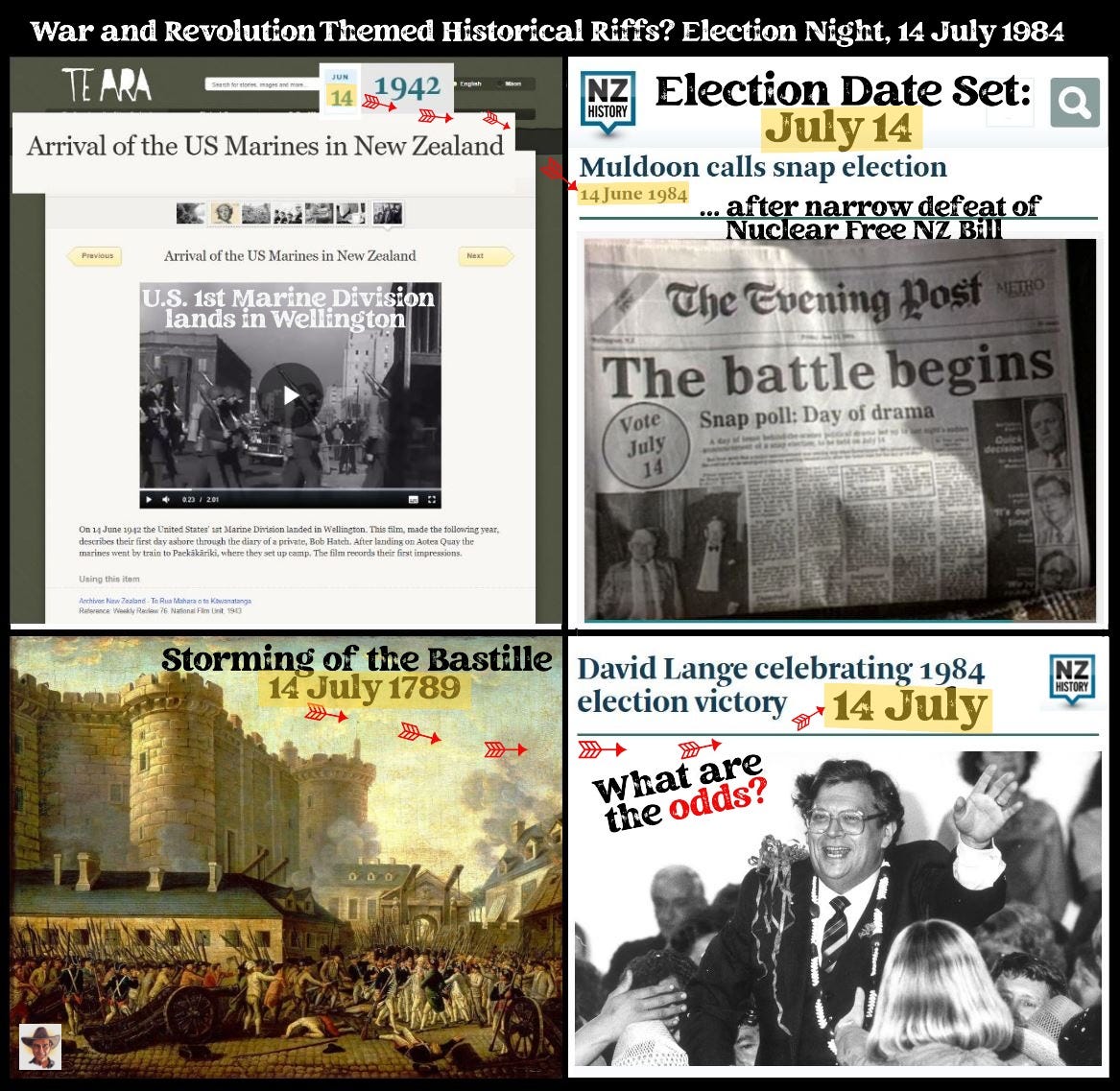
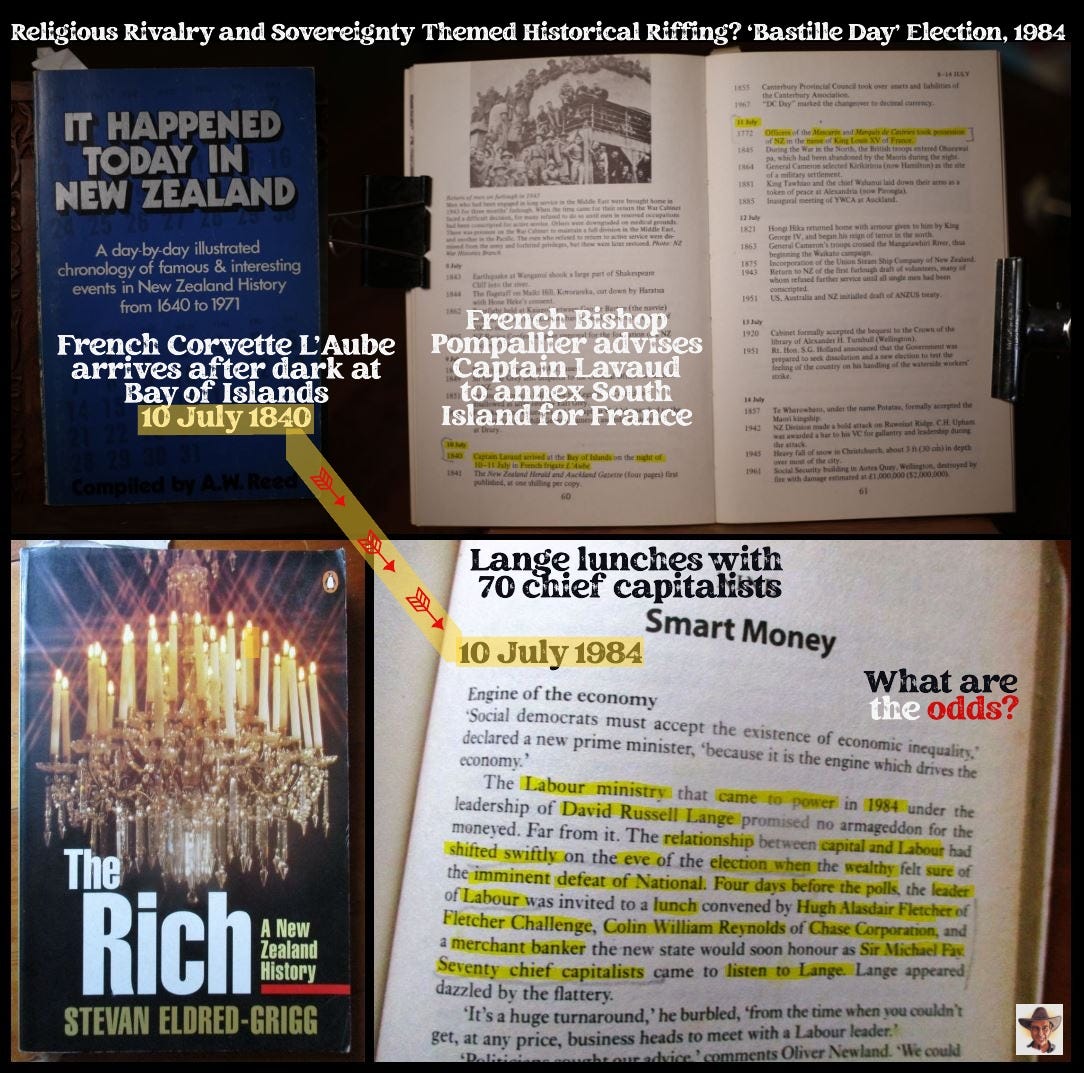
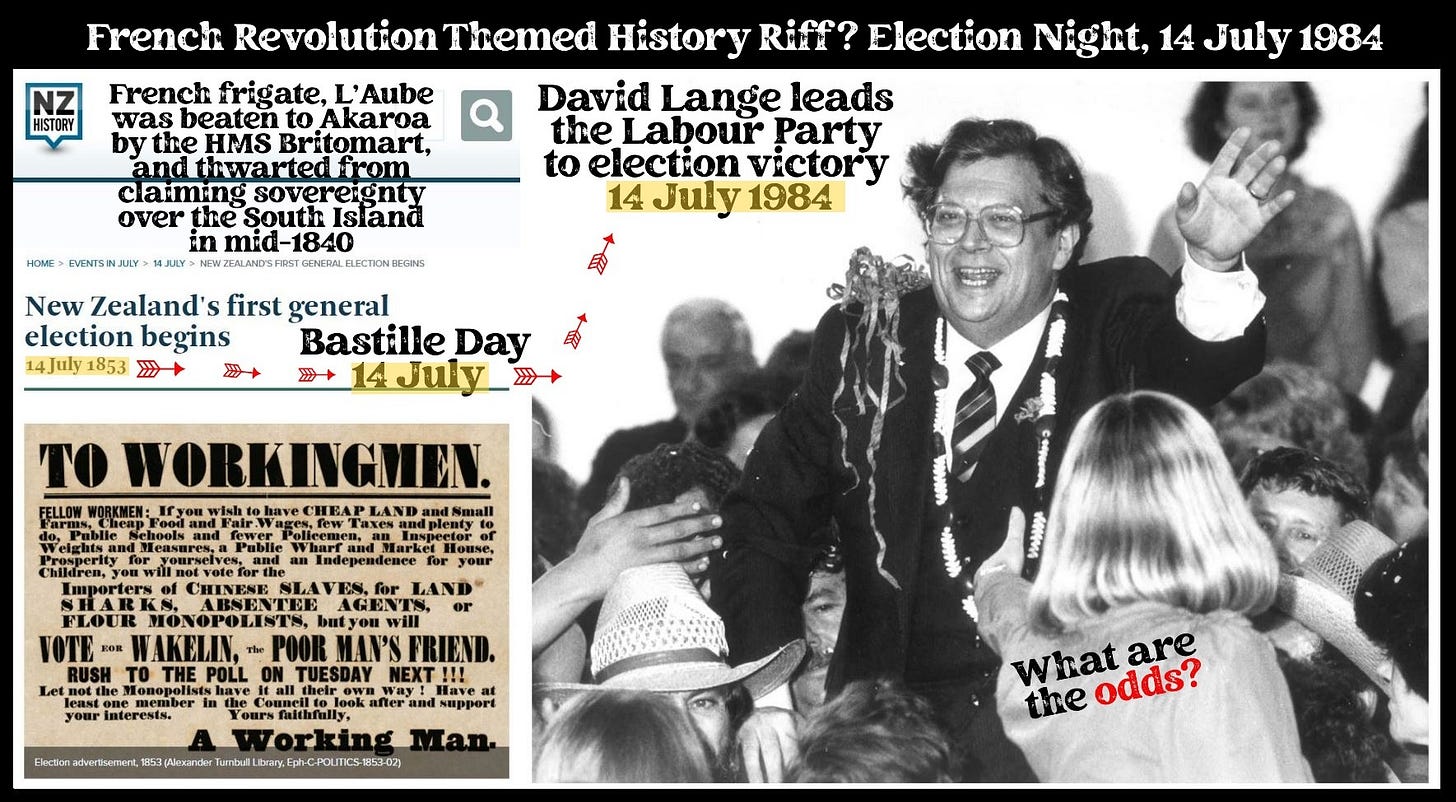
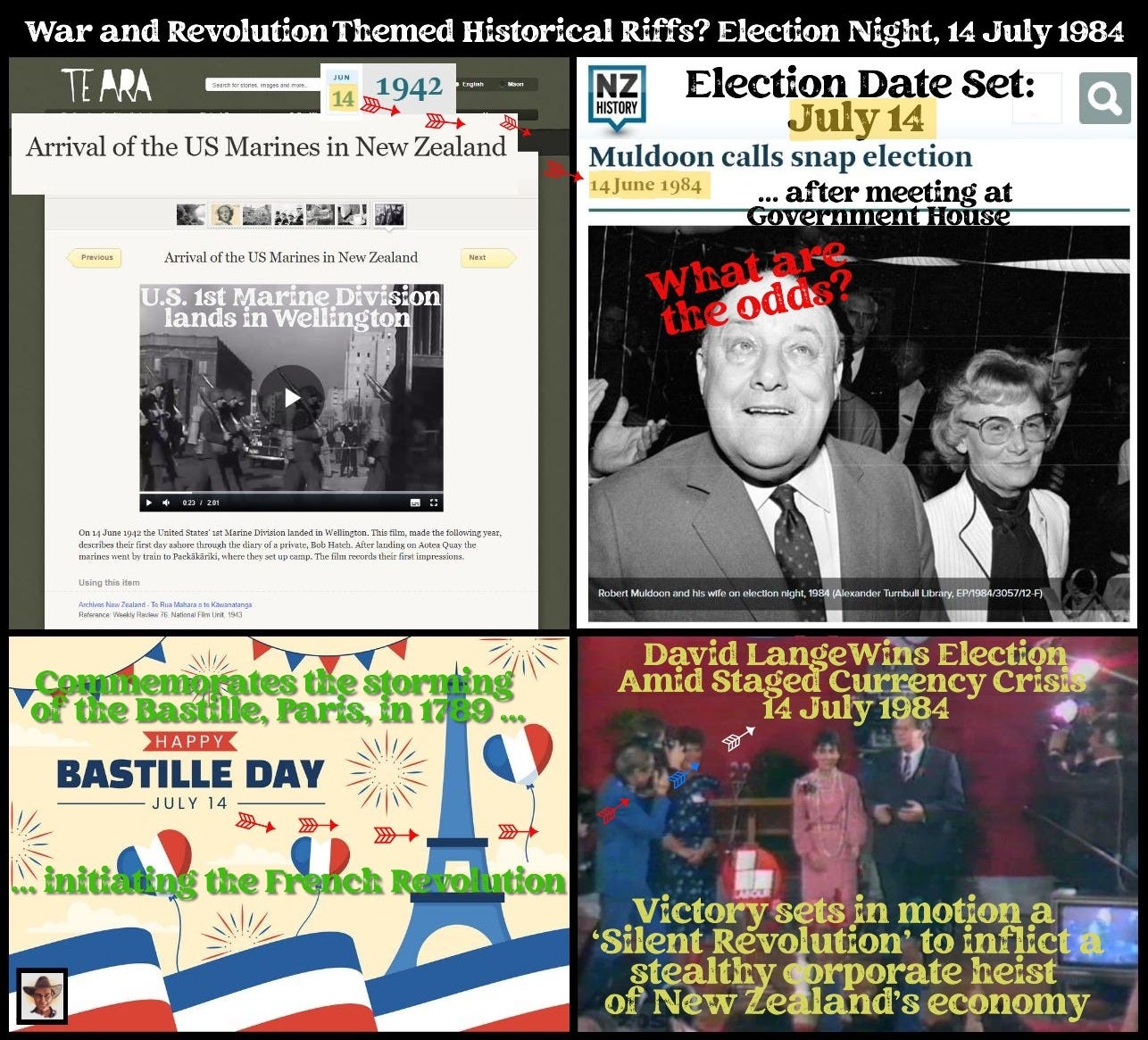
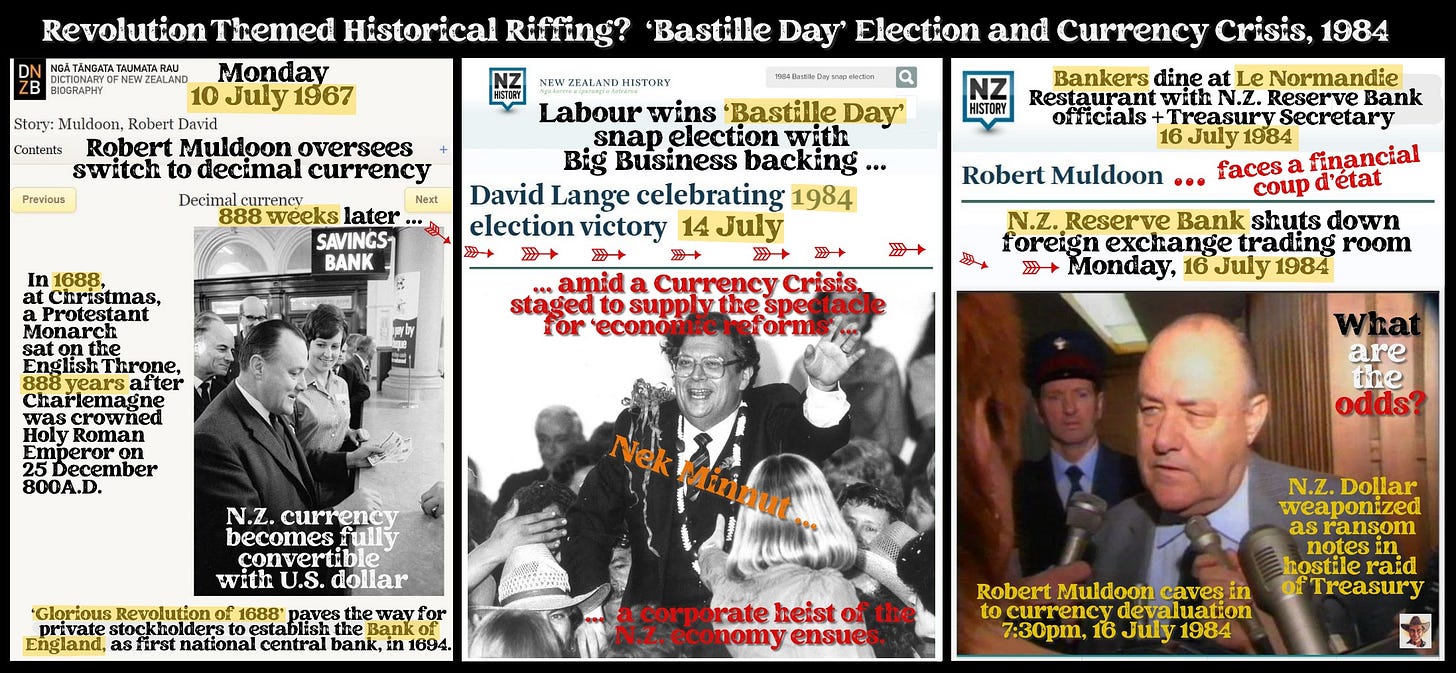
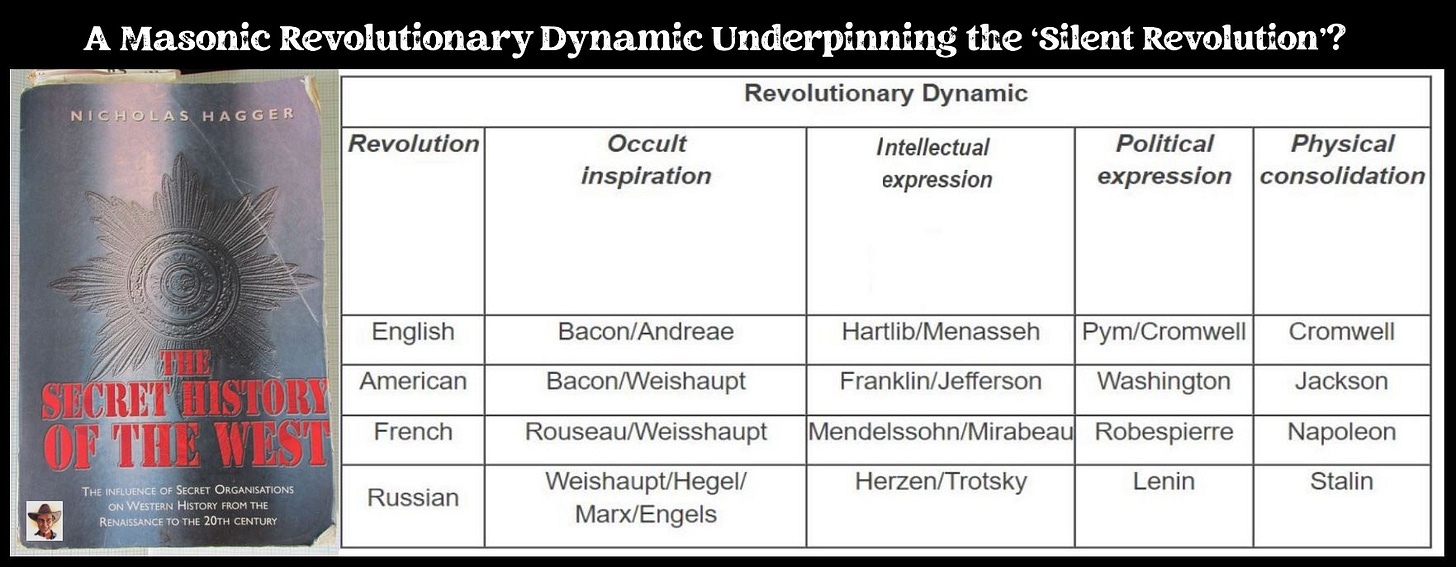
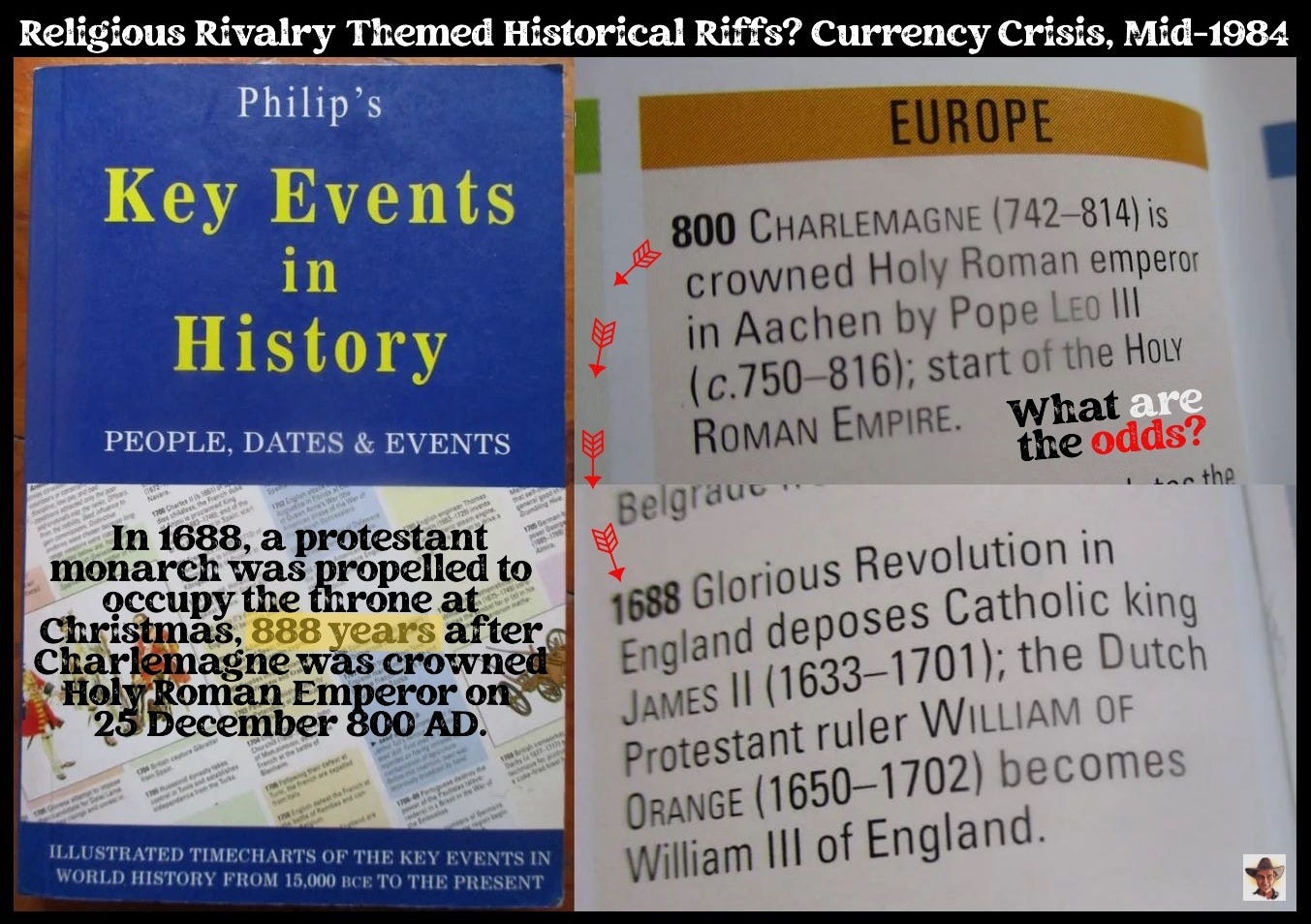
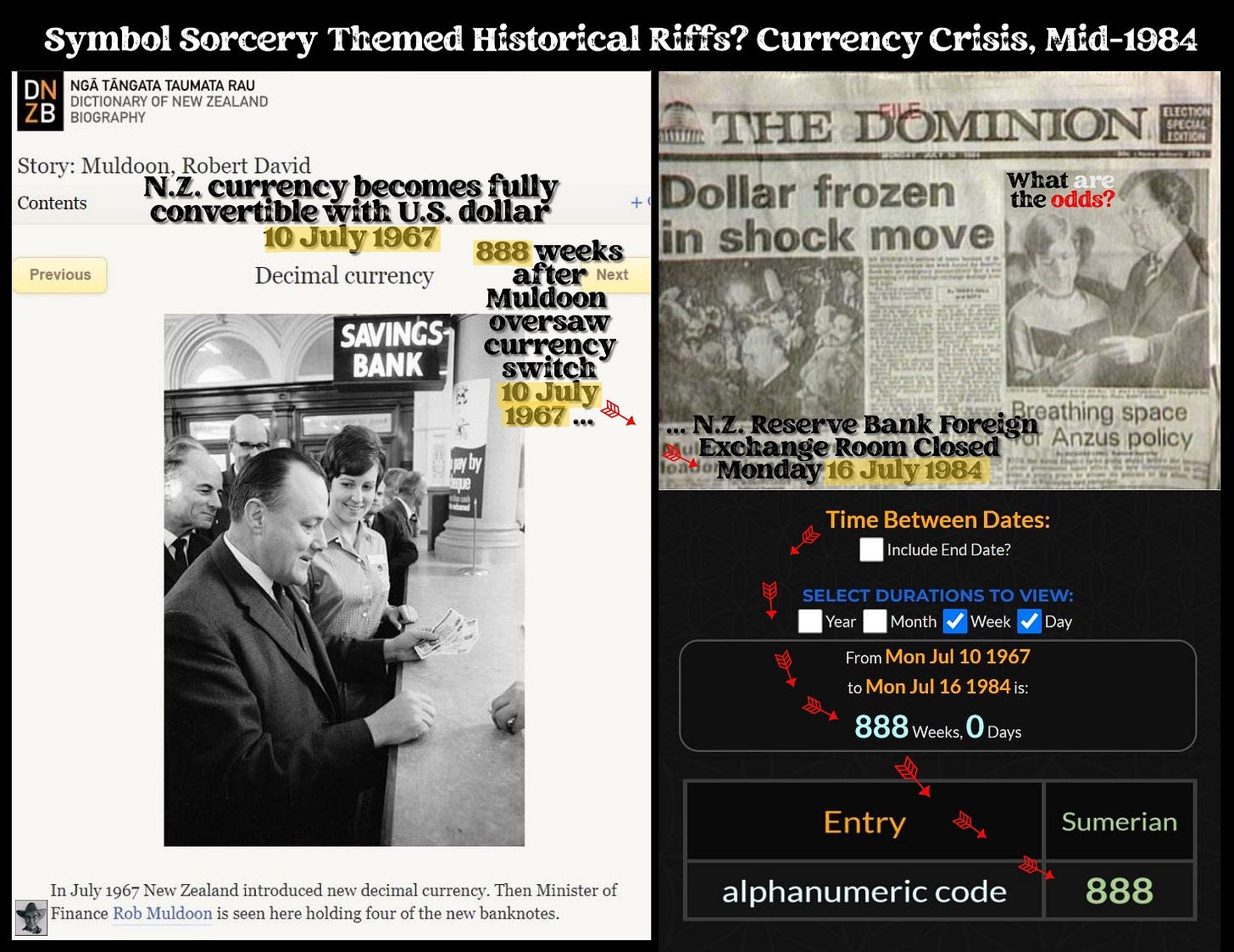


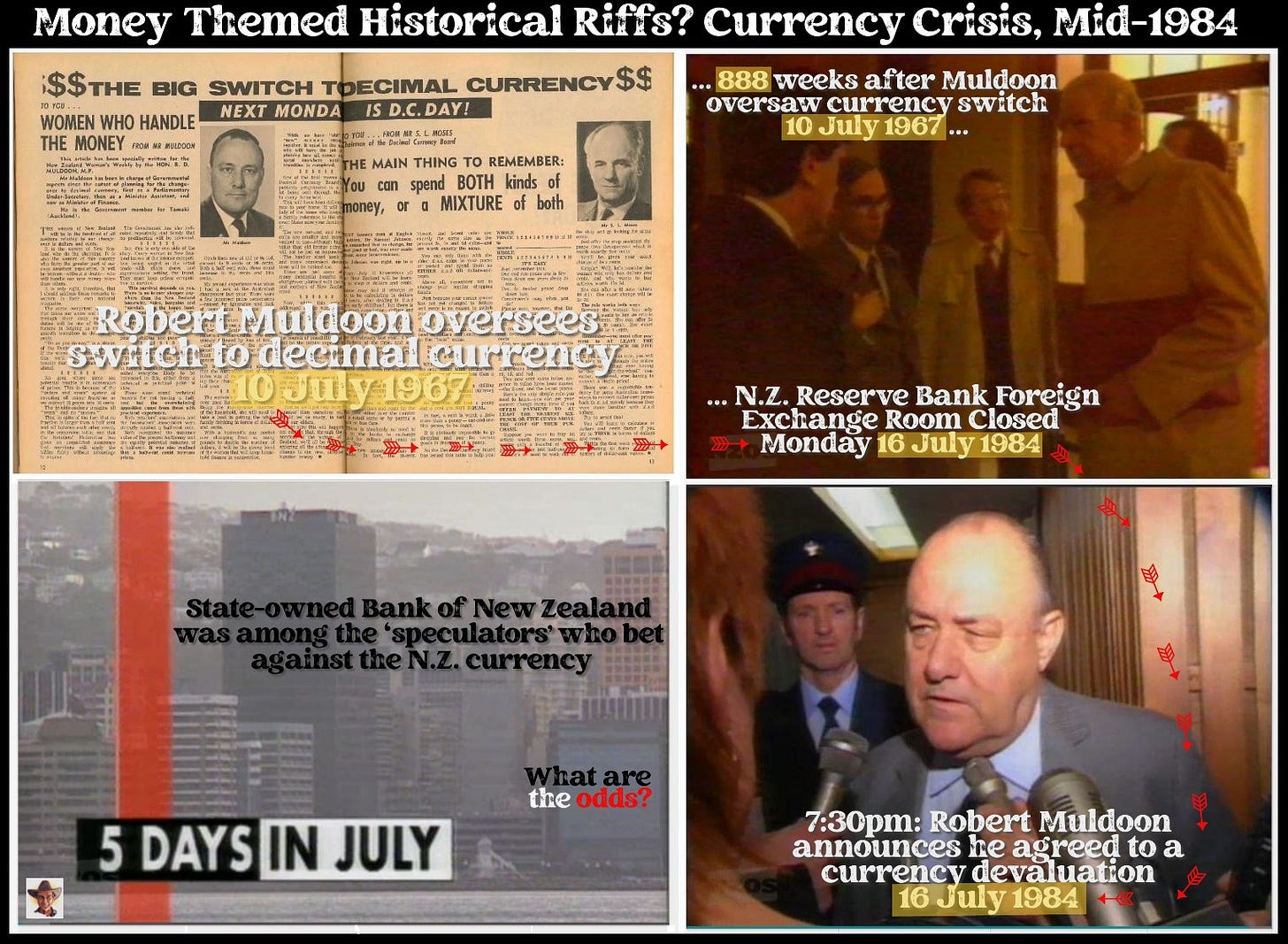
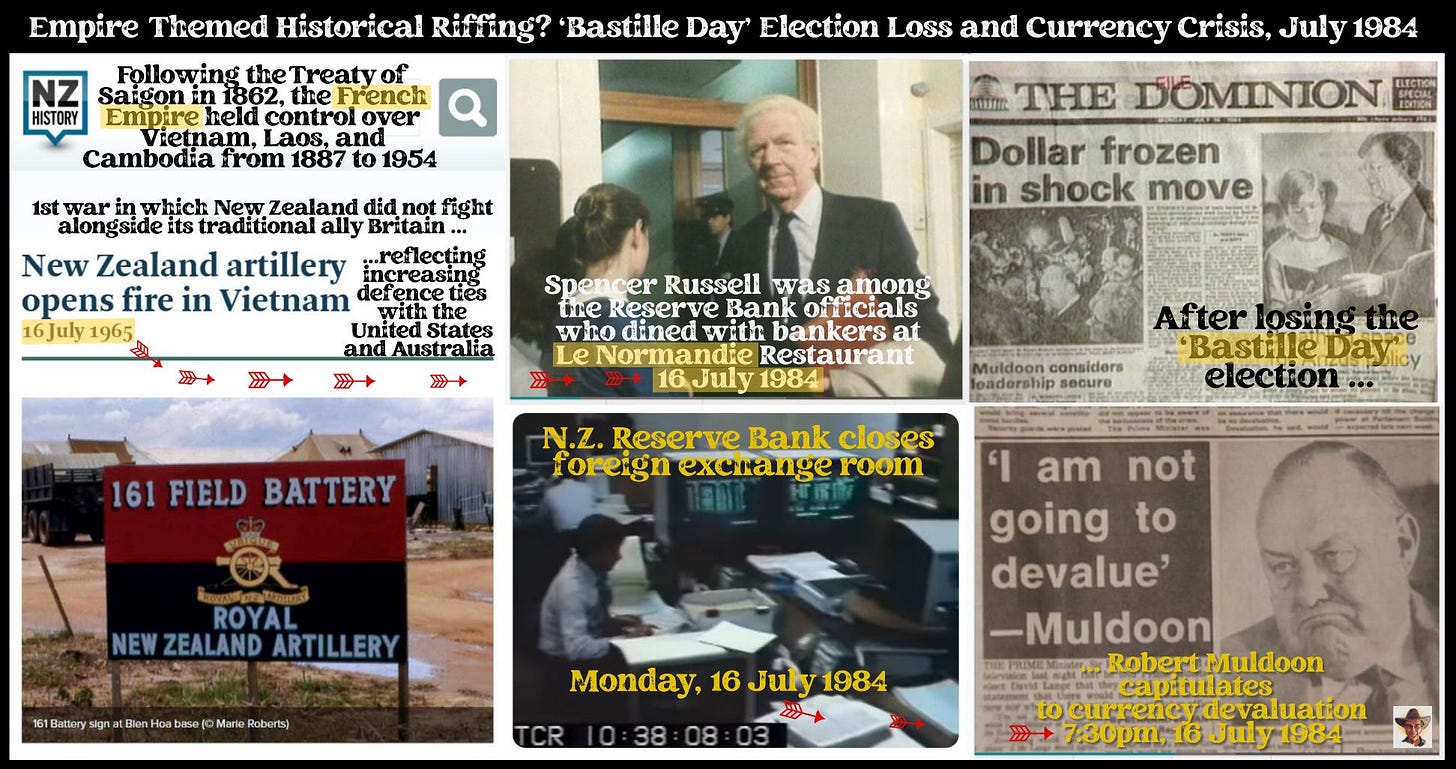

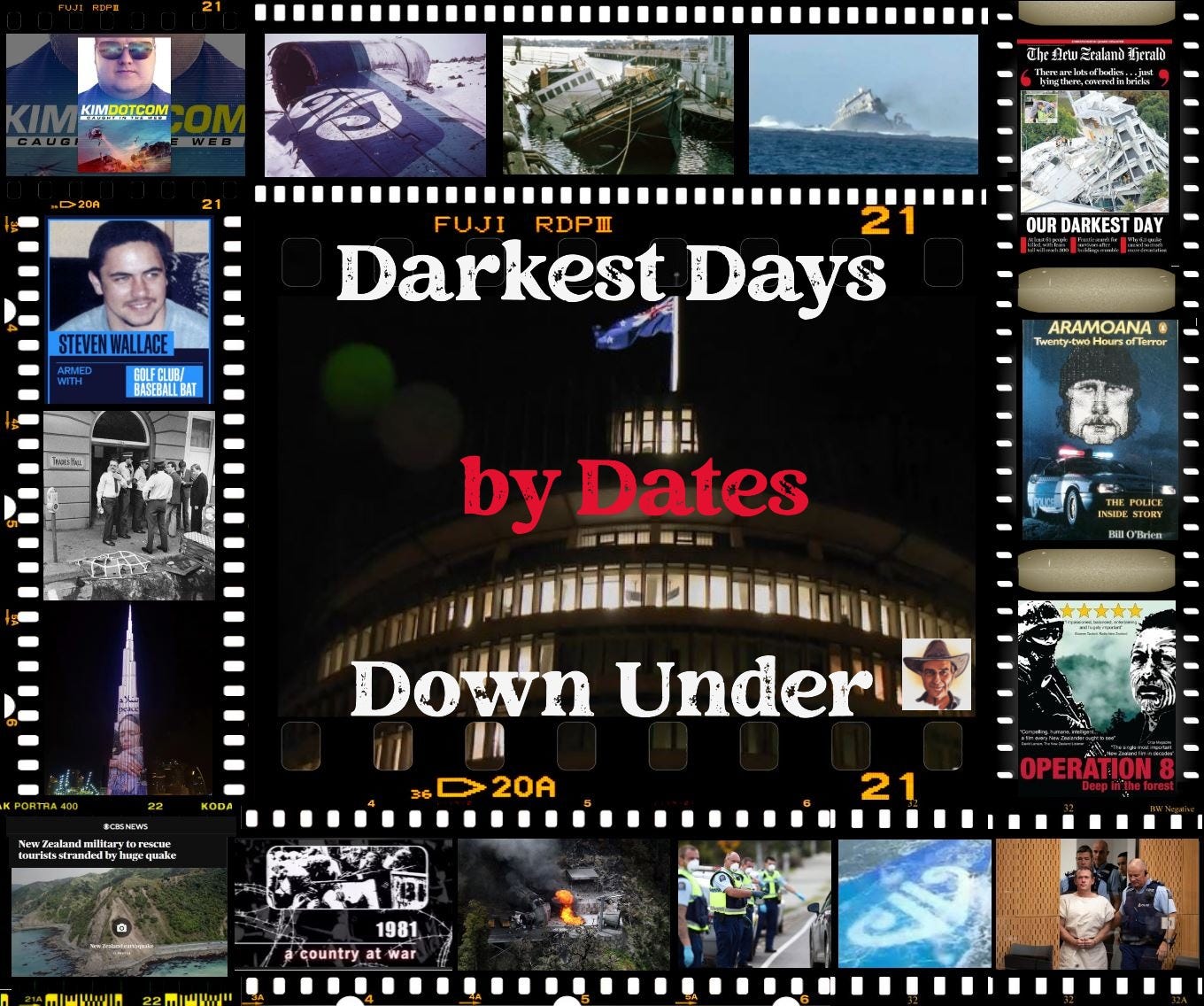

https://substack.com/@thepoisonedkiwi/note/c-111050285